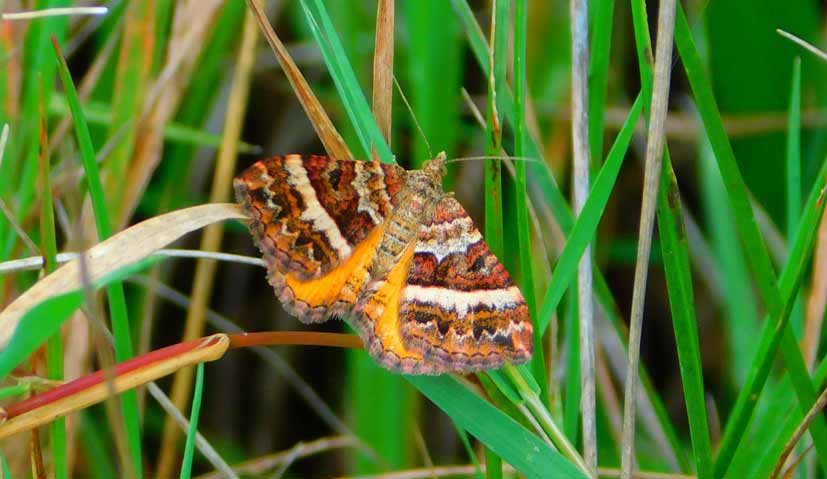The Green Line project continues to protect biodiversity and habitat
With substantial support from VicTrack in partnership with Landcare Australia, the Basalt to Bay Landcare Network has been managing The Green Line Project since 2013. The project aims to protect and enhance the biodiversity corridor and Endangered ecological communities present on the former Koroit to Minhamite Railway Line in South Western Victoria.
This linear reserve stretches almost 37 kilometres, encompassing numerous listed endangered Ecological Vegetation Classes, as well as many rare and endangered species. The Green Line Project holds significant scientific interest as it is one of the last remaining non-road strongholds of remnant Victorian volcanic plains and woody grassland ecological communities – all of which are federally protected.
Over the years, the project has enhanced and protected the natural and cultural assets of The Green Line through reducing weed incursions into the native Grassland and Grassy Woodland areas, controlling pest animals, supplementary planting with indigenous species, supporting education of local students, ecological burning, and building relationships with multiple local groups and more.
2021/22 Project Highlights:
- In 2021-2022, the Basalt to Bay Landcare Network undertook weed control to reduce erosion of indigenous vegetation and species habitat, and pest animal control.
- The Network is also researching the presence of native fauna species, including the Fat Tailed Dunnart and insects, and working with Monash University scientists on a Glossy Grass Skink project as there is a historic record for the small native reptile on the Warrong section of the Green Line.
2020/2021 Project Highlights:
- Controlling 8ha of weeds, reducing their impact on the ecology of The Green Line and helping to prevent the weeds spreading through the surrounding landscape.
- In March 2021, an exciting discovery along The Green Line was made when the Landcare Network Facilitator recorded a native moth within the native grassland, according to the Atlas of Living Australia, has not been officially recorded west of the Otways before.
- Adding a further 600 native trees & shrubs to a degraded section of The Green Line.
- Monitoring, through photo points, and flora and fauna surveys, including of Dianella (flax lily) populations, foxes, feral cats, Ring Tailed Possums, Koalas, and Kangaroos. The Basalt to Bay Landcare Network also continue to upload survey results to iNaturalist and the Atlas of Living Australia.
- Excluding vehicles and managing to access to Warrong 8km of track to prevent poaching, illegal firewood harvesting, off-roading, and waste dumping.
- Controlling pest animals, contributing to the good neighbour relationships between VicTrack, Landcare, and adjoining landholders. Building future projects across adjoining private land to enable more biodiversity to reach The Green Line, increasing its landscape connectivity.
- Hosting a Junior Landcare event with the Warrnambool Wave School, visiting The Scar Tree and connecting students with Traditional Owner Representatives who demonstrated traditional tools made from species found on The Green Line as well as uses for native plants found around it. In 2018, Basalt to Bay discovered this scar tree which is now listed in the Heritage register.
Conclusion:
The work of Basalt to Bay, supported by VicTrack, continues to grow the profile of The Green Line leading to increased approaches from volunteers and prospective funders.
The work achieved on The Green Line has resulted in Basalt to Bay being awarded the Moyne Shire Council Climate Emergency Response Community Carbon Offset Program (private land) Grant program for the next four years.
This program, which supports private land tree & shrub planting, will encourage more neighbors to The Green Line to plant vegetation that benefits their agricultural businesses as well as adding to the habitat for Green Line fauna.
Lisette Mill, Basalt to Bay Landcare Network Facilitator and the Green Line Project officer since 2013, says “The Green Line continues to be one of the highest biodiversity quality linear Native Grassland/ Woody Grassland remnants in South West Victoria.
“It is a rich, diverse, living archive of native species that have disappeared from the land all around it and is highly valued as contributing to VicTrack’s accounting of how its environmental assets support the Biodiversity 2037 and carbon sequestration goals of The Victorian Government.”

A species of native moth found on site that has never been recorded west of the Otways before.



